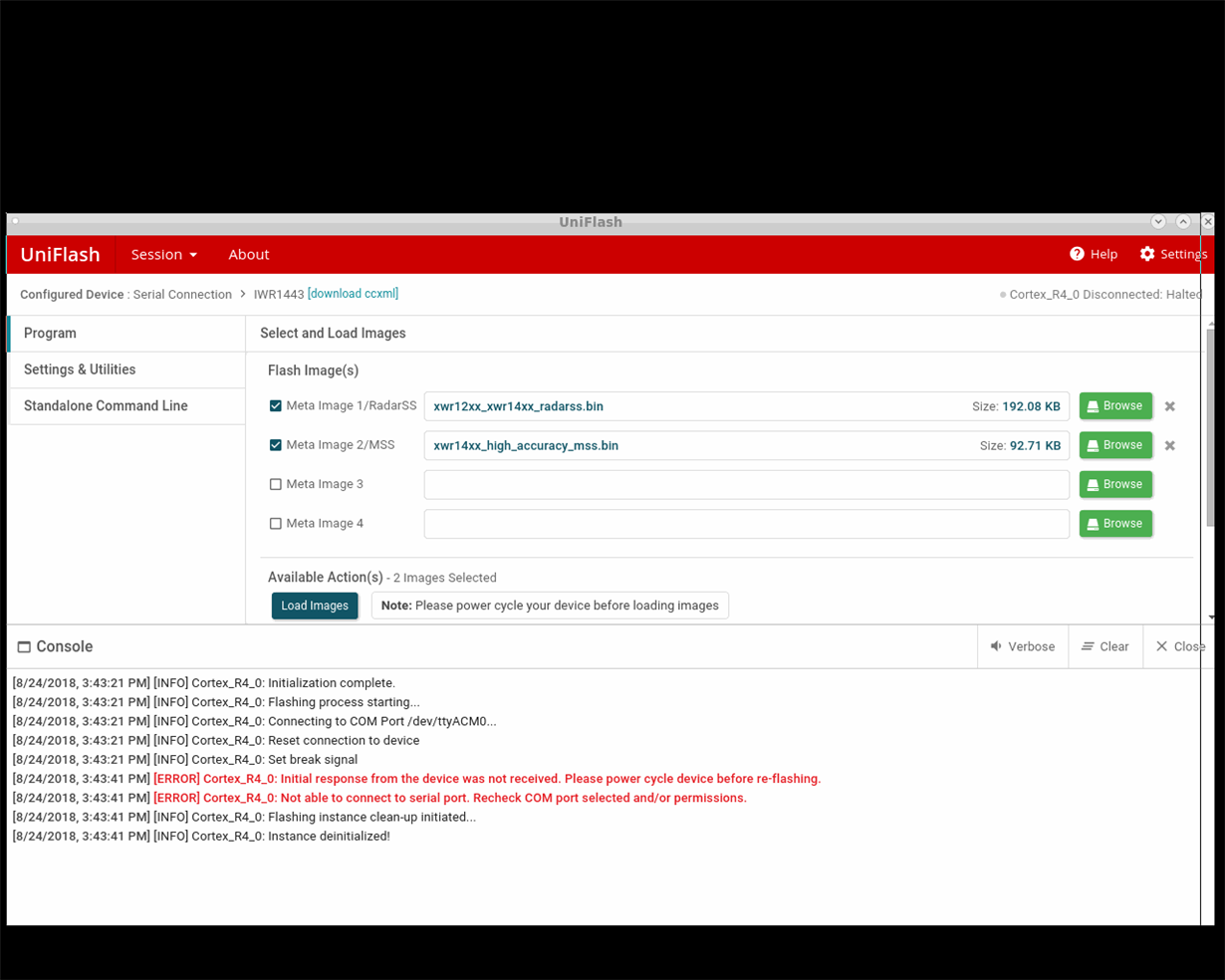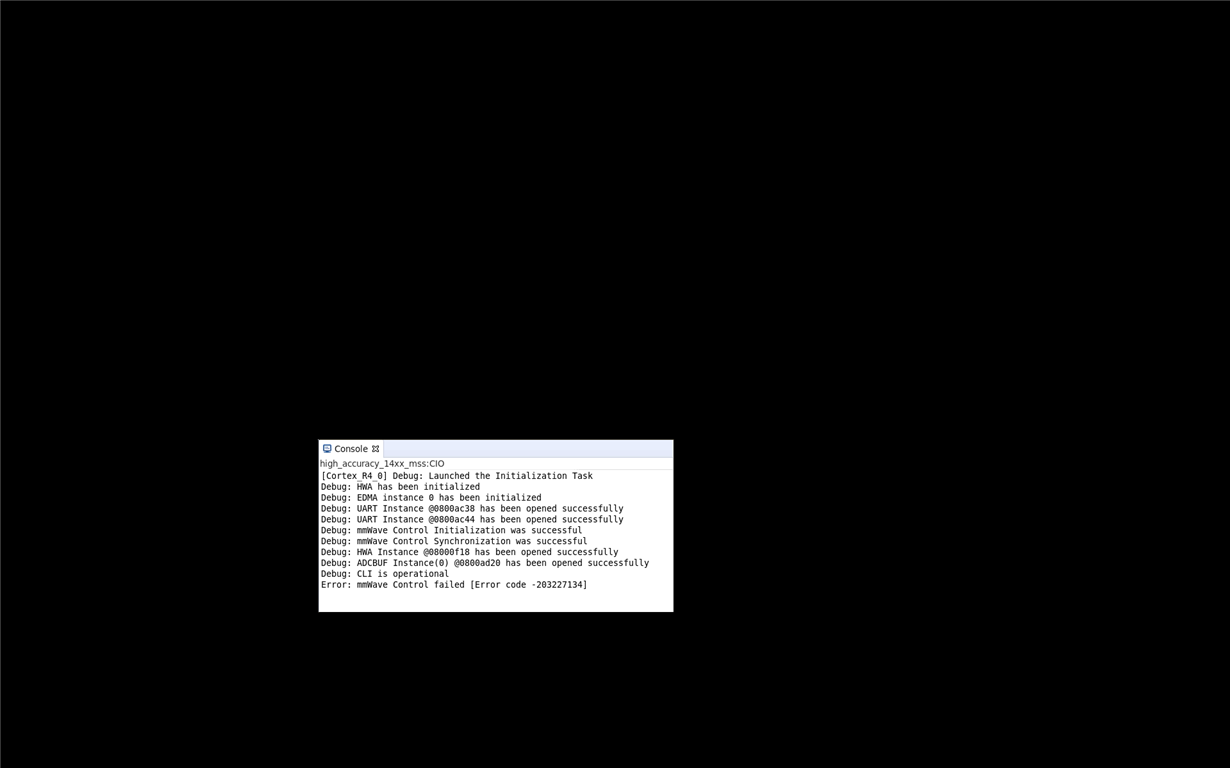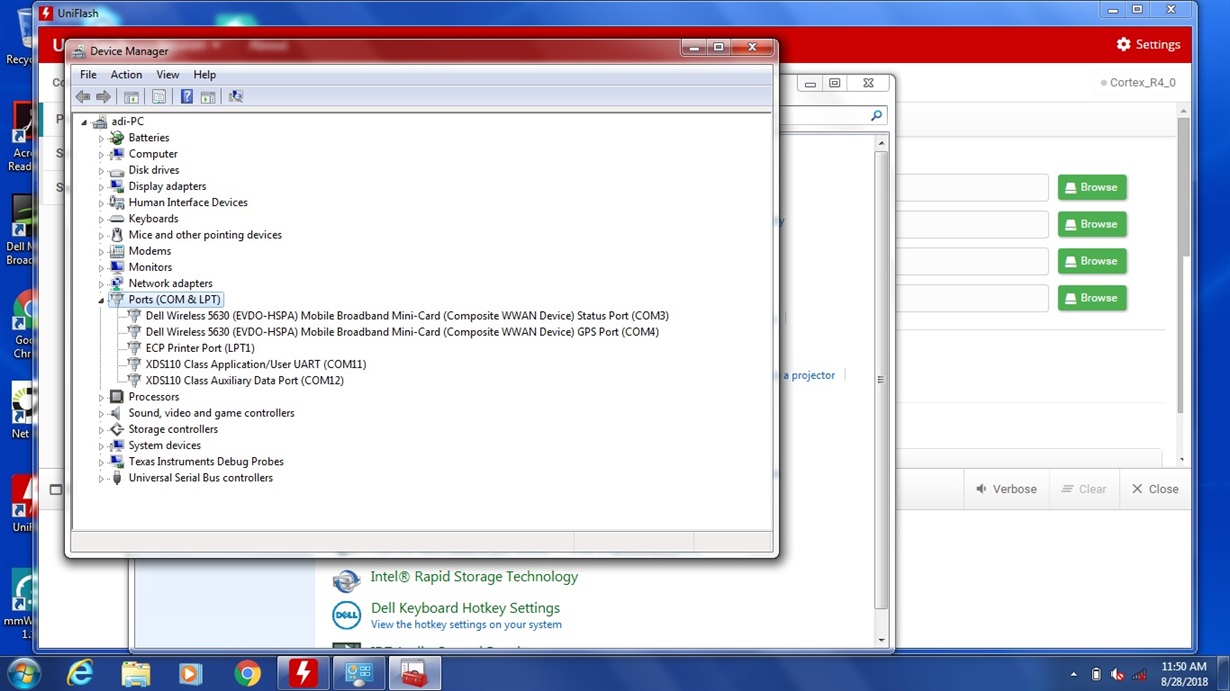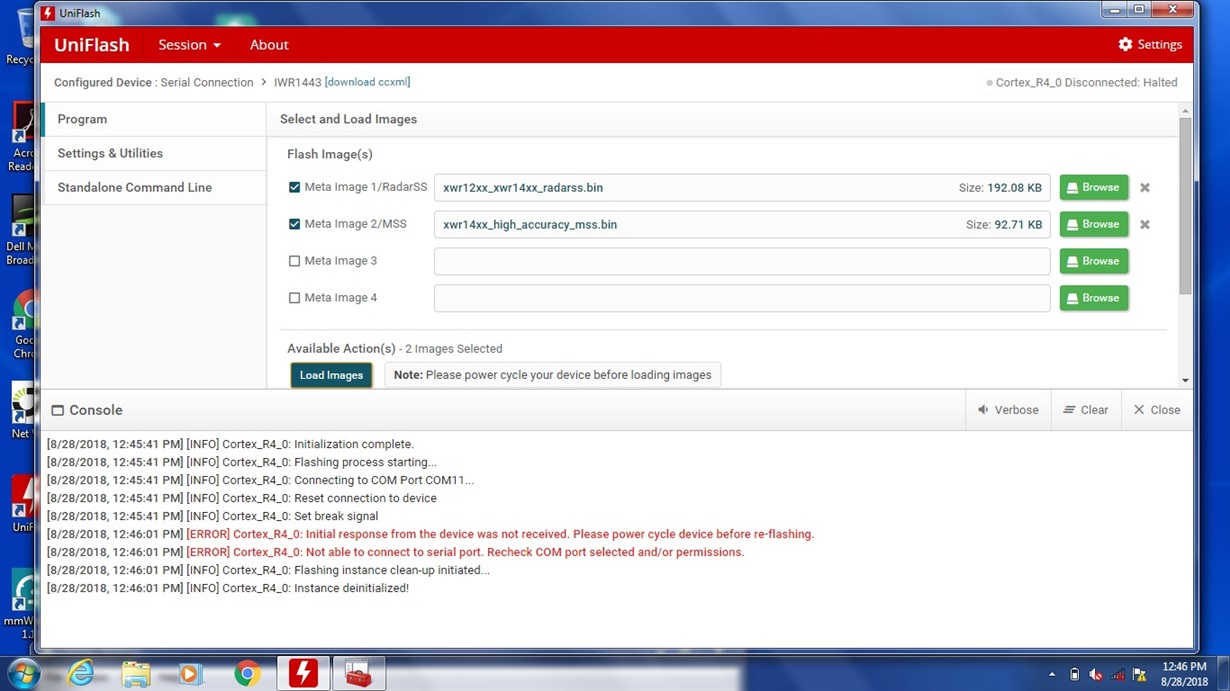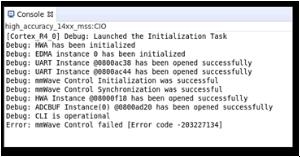Other Parts Discussed in Thread: UNIFLASH, ,
Hi,
I have been running the mmwave demo visualizer, the high accuracy gui and the uniflash binary on two offline linux computers, one for development and one field testing. I often can not connect the the sensor via /dev/ttyACM0 and /dev/tyACM1. It is very frustrating and time consuming to connect. I have searched the forum and found other users with the same issue but no real solution. Using windows is not an option. Sometime pressing the reset button helps. I have examined /var/log messages and the sensor is seen with both ACM0 and ACM1 present . I am in the dailout group and the permissions are set to read and write for user/group and other.
Please advise.
Al


